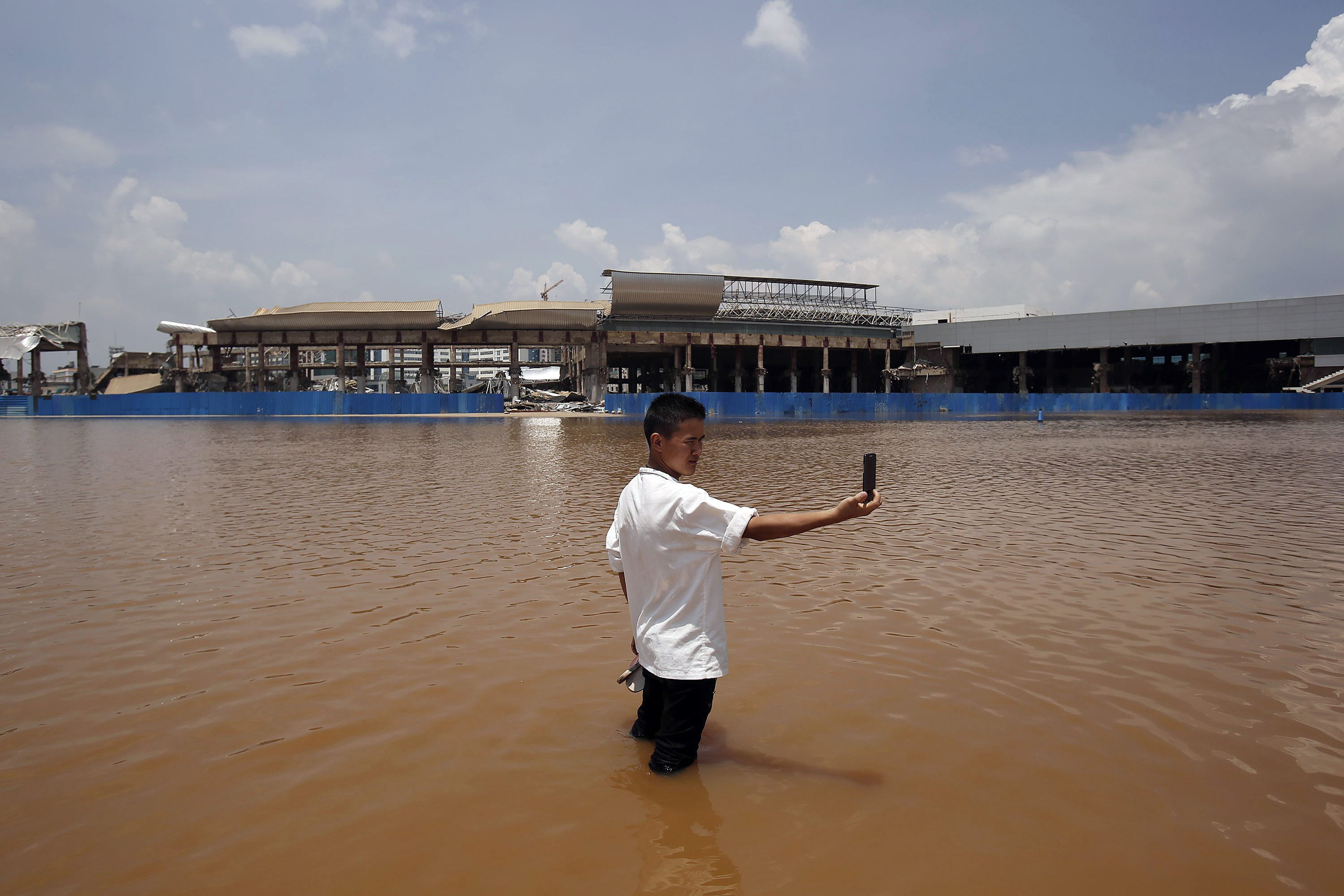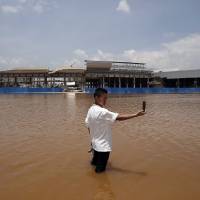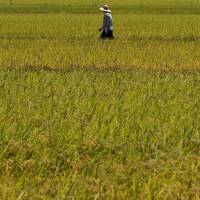After creeping slowly northward for weeks, the rainy season finally hit Tokyo earlier this month. And rain it has.
For days on end the rain can fall, heavy and steady, saturating Tokyo. There's not much we can do except wait out the downpours, but the rains offer a bit of calm and the trees take on a deep, rich green that is almost surreal.
In terrifying contrast, news from the Middle East has focused on Islamic State of Iraq and Syria (ISIS) Sunni insurgents now sweeping across Syria and Iraq. Heavily armed and loaded in pickup trucks, the militants are shown in images barreling across arid, windswept landscapes, no greenery in sight, with clouds of dust and sand billowing out from behind their vehicles.
The Sunni-Shiite ISIS conflict is not a fight over water, not yet anyway, but one wonders how different the region might be if water were plentiful and the land verdant.
And what of the tens of thousands of refugees now streaming across Syria and Iraq, looking for safety? As they flee to a third country in need of shelter, food and water, might not Japan be drawn into a military conflict, or a humanitarian-aid quagmire?
Do a Google search for "water conflict" and you'll get nearly 10 million hits. Africa, the Middle East, India and China are the places that pop up most often.
The World Economic Forum has ranked water crises "the third-biggest risk to stability in the decade ahead," with fiscal crises and unemployment in first and second place, respectively, according to Beth Gardiner in a recent New York Times article (June 2).
On The Guardian website (Feb. 9), Suzanne Goldenberg pointed out how divergent water crises can be. This past winter while Britain was "drowning in misery" from Atlantic storms flooding its southwestern region, 1 billion people on the planet did not have access to safe drinking water, she noted.
James Famiglietti, a hydrologist at the University of California, Irvine, confirmed that divergence is becoming the norm. The wet areas of the Earth — the northern latitudes, the Arctic and the tropics — are getting wetter, while the middle latitudes — the arid and semi-arid parts of the world — are getting drier and suffering more drought, Famiglietti told Goldenberg.
This is neither a fluke nor a short-term variation. These changes in precipitation reflect steady alterations in the planet's climate as the biosphere warms.
This means the hydrology of the planet and the availability of freshwater resources are changing, as are marine ecosystems.
Rising sea levels will increasingly push saltwater further up rivers and into coastal groundwater, and more powerful ocean storms will create tidal surges that flood coastal lowlands, notes a 2009 report from the Stimson Center titled "Troubled Waters: Climate Change, Hydropolitics and Transboundary Resources."
Drought and flooding, "both types of threats can impair food production, endanger public health, stress established settlement patterns and jeopardize livelihoods and social well-being," warns the report.
In the middle latitudes, less precipitation is not the sole problem. Unsustainable use of rivers and groundwater is rapidly drying up water sources that have fed, clothed and bathed humans for millenniums.
Goldenberg noted that 600 million people inhabit a broad stretch of land across eastern Pakistan, north India and western Bangladesh that is "the most intensely irrigated" land in the world.
"Up to 75 percent of farmers rely on pumped groundwater to water their crops, and water use is intensifying," she noted.
"Over the last decade, groundwater was pumped out 70 percent faster than in the 1990s. Satellite measurements showed a staggering loss of 54 cu. km of groundwater a year. Indian farmers were pumping their way into a water crisis," she added.
India, Pakistan and Bangladesh are already touchy neighbors at best. Lack of water could push hungry and thirsty villagers into water conflicts across state and national borders, and especially into confrontations over groundwater, which can be extremely difficult to quantify and share equitably.
In the Middle East, where armed conflict is already all too common, leaders are taking water shortage concerns very seriously.
Iranian President Hassan Rouhani has called water "a national security issue," and Goldenberg wrote that "shortages are so severe in the United Arab Emirates that the country is using non-conventional resources, including desalination, treated wastewater, rainwater harvesting and cloud seeding."
UAE Crown Prince General Sheikh Mohammed bin Zayed al-Nahyan has said, "For us, water is (now) more important than oil," she added.
Here on Japan's main island, Honshu, we're lucky. The closest we get to a fight over water is trying to decide who will get the last umbrella left outside the pub on a rainy evening.
But Japan, too, will have considerable changes to deal with, according to a 2008 WWF report, "Nippon Changes: Climate Impacts Threatening Japan Today and Tomorrow."
Looking forward, projected climate changes include, temperature increases of 2 to 3 degrees Celsius over the next 100 years; an increase in mean precipitation by more than 10 percent over the 21st century and an increase in summer precipitation by 17-19 percent; and an increase in the frequency and intensity of extreme weather events, such as tropical cyclones, heat waves and heavy-rainfall events.
The report projects a rise in sea level of 5 mm per year throughout the 21st century, which will pose a threat to 46 percent of the population and 47 percent of industrial output. The authors also expect an increase in the likelihood of inundation and intrusion of seawater into groundwater aquifers and increased erosion of coastal zones.
As for specific impacts on humans, here are a few to consider: Increased likelihood of infectious and vector and water-borne diseases; expansion of dengue fever into Hokkaido; increases in allergies and allergy-related diseases; increased cost of living and protection from more extreme weather events; deteriorated freshwater systems; 1.2-3.2 percent increase in the demand for water supply (with a 3-degree warming); negative impacts to fruit crops and an increase in abnormal fruits; and a 40 percent decrease in rice yields in central and southern Japan.
Japan will clearly have its hands full with climate-change impacts.
Could climate change and water crises abroad also draw Japan into a military conflict? What about the ISIS conflict?
With the third-lowest water reserves in the region, Jordan is struggling to cope with an influx of Syrian refugees, Goldenberg noted in her Guardian piece. And that was before the ISIS insurgency got into full swing.
Assuming Prime Minister Shinzo Abe gets his way and the Diet approves a reinterpretation of Japan's Constitution, we might soon see Japanese troops empowered to join collective security activities abroad, using military force in an international dispute.
What then if a Japanese ally joins efforts to contain the ISIS insurgency or provide humanitarian assistance?
Much sooner than anyone imagined, Japanese forces could find themselves in a war zone, or dealing with the spinoff from a water crisis very far from home.
Stephen Hesse is a professor in the Law Faculty of Chuo University and associate director of Chuo International Center. He can be reached at [email protected].




















With your current subscription plan you can comment on stories. However, before writing your first comment, please create a display name in the Profile section of your subscriber account page.